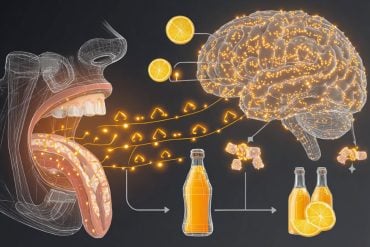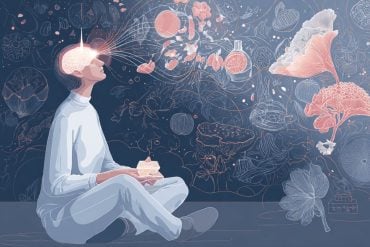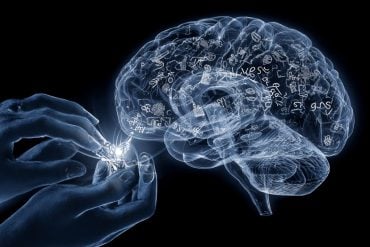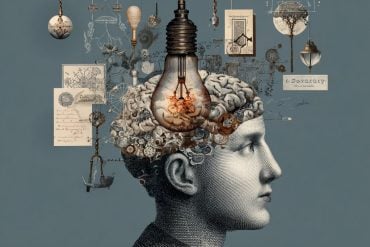Summary: Researchers discover a correlation between clinical symptoms of PTSD, depression and anxiety in visual self expression masks service members were asked to create during art therapy.
Source: Drexel University.
When making visual art during their recovery from traumatic brain injuries (TBI), military service members who depicted psychological injuries like depression or anxiety in their artwork tended to have more acute post-traumatic stress disorder than those who used symbols of their military units, a new study found.
Masks created by 370 active duty service members in the first of a four-week creative arts therapy program at the NICoE were analyzed, the study, published by the BMJ Open.
Each mask created in the program starts as a simple, blank human face that participants were encouraged to paint, cut, or add to with the objective of creating a representation of how they felt. Kaimal, Walker and their team categorized the themes they found in each, then matched every mask with data from questionnaires each participant took earlier that measured depression, anxiety, stress, and post-traumatic stress disorder.
More than 10 percent of the masks had symbols relating to the participant’s military units, like a logo or unit patch. Those kinds of masks were tied to lower levels of post-traumatic stress disorder.
“We were surprised by how strongly references to a sense of belonging were associated with positive health outcomes,” Kaimal said.
However, another category was noticed in the masks: “Fragmented representations of military symbols.” These could include faded flags or pieces of camouflage and weapons, and also showed up in around 10 percent of masks. But, this time, it was tied to elevated anxiety in the mask-makers.
“There is a subtle difference here between identification with military branch and the use of fragmented imagery associated with the military symbols,” Kaimal pointed out. “It might be that an integrated sense of belonging and identity are associated with resilience while use of fragmented images are associated with some ongoing struggles.”
More than a quarter of the masks had a representation of psychological injury, which was tied to higher levels of post-traumatic stress disorder symptoms. But roughly a third depicted metaphors, tied to lower symptoms of anxiety.
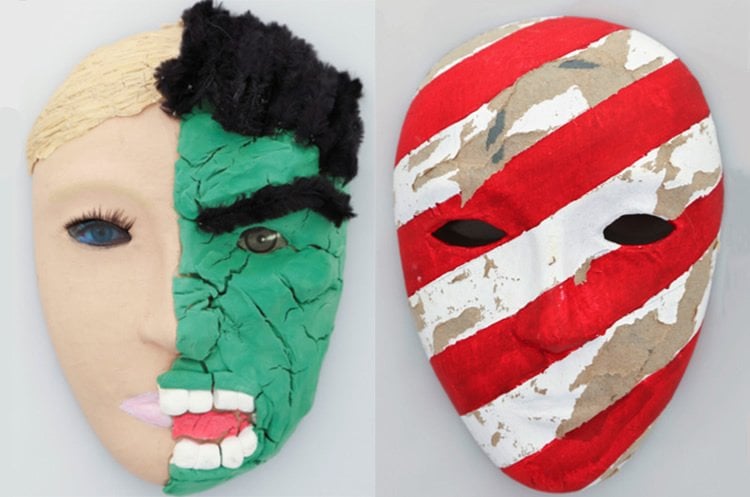
“The main takeaway is that visual representations embed patterns of strengths and struggles that can help clinicians and researchers better serve this population in coping with their injuries and the psychological symptoms that accompany them,” Kaimal said.
Having focused completely on active military members, it’s unclear if the findings might hold any clues for civilians dealing with recovery from traumatic brain injuries and PTSD. There may also be differences in women versus men that were not observed because the participants were overwhelmingly male.
“Imagery created in other contexts might also be different,” Kaimal said.
Kaimal has been a research collaborator with Creative Forces for several years and has focused especially on the masks made at the start of the four-week program. Moving forward, she hopes to look deeper into the relationships between the imagery and clinical symptoms, with a big focus on whether there are signs in the art later in a patient’s progress that indicates healing and recovery, something therapists will be able to look out for.
“Namely, do certain types of imagery correlate with improved outcomes over time?” Kaimal posed. “We hope to publish those findings in the next few months.”
Funding: This study was funded as part of Creative Forces: NEA Military Healing Arts Network, an initiative of the National Endowment for the Arts in partnership with the Department of Defense, Department of Veteran Affairs and state arts agencies.
Source: Frank Otto – Drexel University
Publisher: Organized by NeuroscienceNews.com.
Image Source: NeuroscienceNews.com image is credited to BMJ Open.
Original Research: Open access research for “Observational study of associations between visual imagery and measures of depression, anxiety and post-traumatic stress among active-duty military service members with traumatic brain injury at the Walter Reed National Military Medical Center ” by Girija Kaimal, Melissa S Walker, Joanna Herres, Louis M French, and Thomas J DeGraba in The BMJ Open. Published June 2018
doi:10.1136/bmjopen-2017-021448
[cbtabs][cbtab title=”MLA”]Drexel University “Content of Service Members’ Art Linked to Their Trauma Levels.” NeuroscienceNews. NeuroscienceNews, 12 June 2018.
<https://neurosciencenews.com/trauma-art-9325/>.[/cbtab][cbtab title=”APA”]Drexel University (2018, June 12). Content of Service Members’ Art Linked to Their Trauma Levels. NeuroscienceNews. Retrieved June 12, 2018 from https://neurosciencenews.com/trauma-art-9325/[/cbtab][cbtab title=”Chicago”]Drexel University “Content of Service Members’ Art Linked to Their Trauma Levels.” https://neurosciencenews.com/trauma-art-9325/ (accessed June 12, 2018).[/cbtab][/cbtabs]
Abstract
Observational study of associations between visual imagery and measures of depression, anxiety and post-traumatic stress among active-duty military service members with traumatic brain injury at the Walter Reed National Military Medical Center
Objectives The study aimed toc ompare recurring themes in the artistic expression of military service members (SMs) with post-traumatic stress disorder (PTSD), traumatic brain injury and psychological health (PH) conditions with measurable psychiatric diagnoses. Affective symptoms and struggles related to verbally expressing information can limit communication in individuals with symptoms of PTSD and deployment-related health conditions. Visual self-expression through art therapy is an alternative way for SMs with PTSD and other PH conditions to communicate their lived experiences. This study offers the first systematic examination of the associations between visual self-expression and standardised clinical self-report measures.
Design Observational study of correlations between clinical symptoms of post-traumatic stress, depression and anxiety and visual themes in mask imagery.
Setting The National Intrepid Center of Excellence at the Walter Reed National Military Medical Center, Bethesda, Maryland, USA.
Participants Active-duty military SMs (n=370) with a history of traumatic brain injury, post-traumatic stress symptoms and related PH conditions.
Intervention The masks used for analysis were created by the SMs during art therapy sessions in week 1 of a 4-week integrative treatment programme.
Primary outcomes Associations between scores on the PTSD Checklist–Military, Patient Health Questionnaire-9 and Generalized Anxiety Disorder 7-item scale on visual themes in depictions of aspects of individual identity (psychological injury, military symbols, military identity and visual metaphors).
Results Visual and clinical data comparisons indicate that SMs who depicted psychological injury had higher scores for post-traumatic stress and depression. The depiction of military unit identity, nature metaphors, sociocultural metaphors, and cultural and historical characters was associated with lower post-traumatic stress, depression and anxiety scores. Colour-related symbolism and fragmented military symbols were associated with higher anxiety, depression and post-traumatic stress scores.
Conclusions Emergent patterns of resilience and risk embedded in the use of images created by the participants could provide valuable information for patients, clinicians and caregivers.



